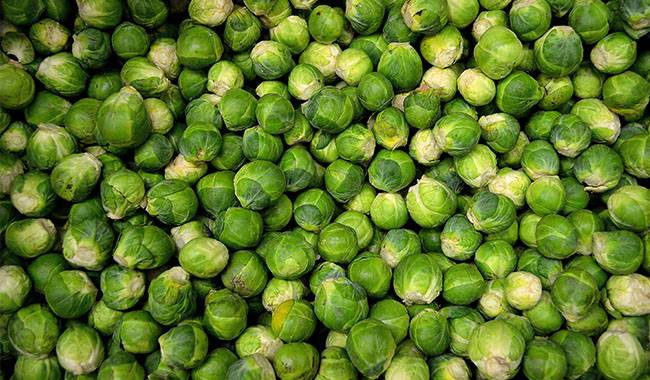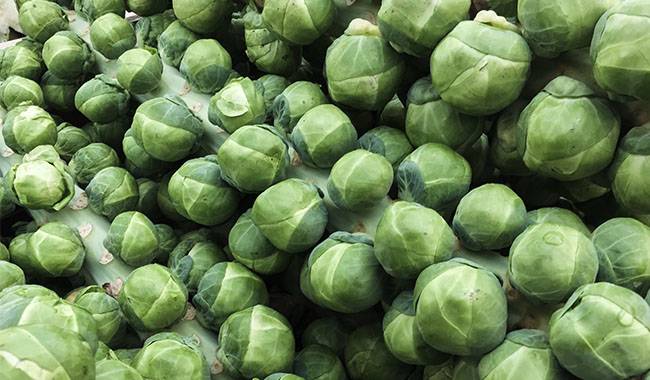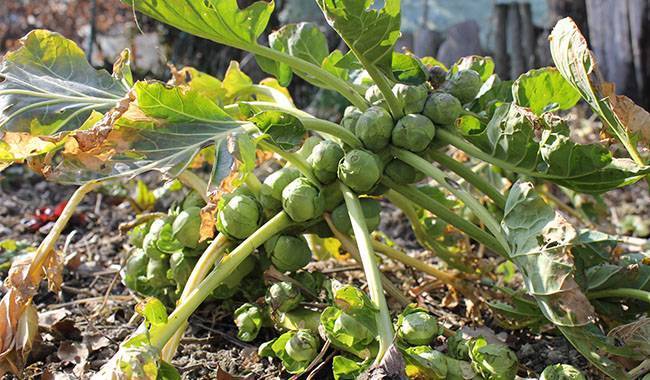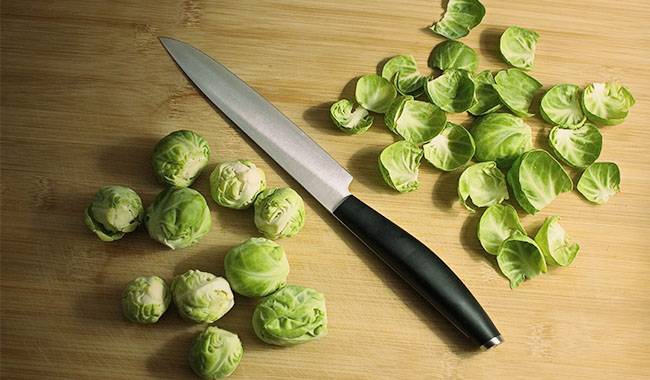
Harvesting brussels sprouts can provide a nutritious side dish at the table, and knowing when to harvest them can make your dining experience even more delicious.
How to harvest Brussel sprouts? harvest Brussels sprouts when they are ½ to 1¾ inches (1-4 cm) in diameter, green, and firm.
As with most vegetables, it pays to learn how to pick Brussels sprouts at the right time.
Brussels sprouts can be harvested 90 to 110 days after planting.
Recommend you to read “What is the value of Brussel sprouts nutrition“
I think cruciferous (a member of the cruciferous family) is a real delicacy that is slow to mature and expensive to buy.
Brussel sprouts are one of the fresh vegetables picked from the garden.
Therefore, I prefer to grow and harvest my own.
Although you may be intimidated by these strange ginormous stems and their funny little edible buds.
We call them sprouts, the process of harvesting clinging brussel sprouts is actually not too complicated.
Let’s get to picking!
WHEN TO HARVEST BRUSSEL SPROUTS
- At first, the plants will grow quickly, but as the weather gets colder, cold production will slow down. In cold weather, fully mature sprouts will remain on the plant; harvest sprouts as needed.
- In mild winter areas, clinging Brussel sproutssown in late summer or fall can be harvested throughout the winter.
- Even if you don’t plan to eat them, pick any soft and undersized sprouts at harvest; also pick the leaves below the sprouts you pick; this will allow the plant to grow taller and produce new sprouts.
- Start picking after the first frost and continue into the early winter during the colder months. New shoots become sweeter and more delicious after suffering frost. Bean sprouts can be harvested from under the snow.
- A plant will produce about 100 sprouts in 2 to 3 months. New shoots left on the plant will begin to yellow and the tightly wrapped leaves will loosen.
- To protect plants from hard freezes, bury them in the top layer of leaves in the straw and pull them back in when the harvest is needed. If temperatures continue to drop below 20°F (-6°C), complete the harvest and store new shoots.
- If most of the new shoots on the plant are to be harvested at one time, wait until the lower new shoots are about ½ inch in diameter, then cut the top of the plant about two weeks before you want to harvest.
- Removing the terminal leaves and growing tips will direct the plant’s energy into the mature new shoots.
- Starting at the bottom of the plant, harvest the sprouts by picking off sprouts approximately the size of a marble or larger. Continue to make stalks for harvesting.
- New shoots grow at the base of each leaf near the main stem of the plant. Grasp each new shoot with two fingers and gently twist to pull it out, or use garden scissors, but cut not too close to the stem.

HOW TO STORE BRUSSEL SPROUTS
- You can store new shoots individually or attach them to the entire stalk. If you are storing the entire stalk, wrap a moist paper towel around the stubs to extend the storage time.
- In very cold winter areas, you can dig up some plants and move them into cold frames or containers in a freezer or basement. You can harvest bean sprouts from these plants for several months.
- Wrap unwashed bean sprouts in a damp towel in a perforated plastic bag and place them in a vegetable crisper in the refrigerator. Refrigerated bean sprouts will keep for 3 to 5 weeks.
- Store Brussels sprouts in a cool, moist place at 32°-40°F (0°-4°C) and 95% relative humidity. Cold and moist storage can be a challenge. Refrigerators provide cool air, but can also dry air.
- The leaves of Brussels sprout plants are edible but are thicker and tougher than cabbage, so they are best chopped and steamed for consumption.
MAINTENANCE AND PRUNING
If you want a decent crop, there are some important tips and tricks to understand the growing process.
Brussel sprouts take a long time to mature. During the long waiting period, a little pruning can help you maximize yields.
Throughout the growing season, observe the plant regularly and strip off any leaves that are starting to turn yellow.
If you choose, you can actually remove all lower leaves regardless of whether they begin to lose color. By encouraging the plants to direct their energy toward producing buds, will speed up the time it takes for them to mature.
Just be sure to always leave some of the larger upper leaves on the plant. Plants must retain some leaves for photosynthesis.
There is no need to throw away what you pick in the compost pile. Instead, you can save those young leaves and cook them!
Similar in texture to Brussel sprouts, they have the flavor of Brussel sprouts, and by simply frying them, the young leaves are delicious.
Larger, older leaves tend to have a more bitter taste.
The best time for plant growth is late summer, 4-6 weeks before the first harvest is expected. To do this, cut the growing tip from the top of the plant above the first developing new bud.
OVERWINTERING
To prolong the harvest, or in the case of later planting, winterize the garden.
To do this, cover very deeply around the base of the plants before the deep freeze. Place thick straw or hay on the mound up to the topmost leaves so that the mulch can be removed when it is time to harvest.
The mulch will protect your plants from the freezing and thawing cycles that can cause cell breakdown and rot.
If it snows before a deep freeze occurs, the snow itself will act as an insulating layer for the top crop of the mulch.
However, once spring arrives, they will quickly bolster and begin to form flower stalks to replace the sprouts.





